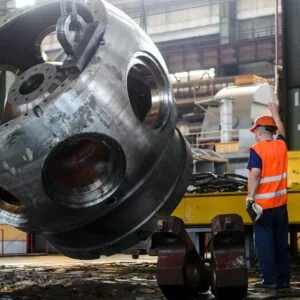This is the fourth and final article in this series where we have examined the following topics:
Articles in this series
Experience tells us that, in practice, there are several barriers that inhibit the success of implementation of Root Cause Analysis (RCA) practices. Among these are:
- This is great, but I don’t have time for this….
- Inability or unwillingness to tackle the bigger issues
- Fear of being “blamed” for making an error
All of these barriers must be overcome if implementation of RCA is to be successful. Let’s deal with each of these barriers one at a time.
This is great, but I don’t have time for this….
There is not a working person on this planet that does not have more things that they must (or would like to) do than they have time to perform. Whether this is in our private lives or our working lives, we are constantly having to make decisions and compromises about what we will do now, and what we will do later (or not at all). So when somebody says “I haven’t got time to do this”, what they are really saying is “what you are asking me to do is lower priority than the things that I am currently doing”. Changing this sense of priorities is one of the imperatives for successful RCA implementation.
There is a poster that is occasionally seen on project office walls that says “If you haven’t got time to do it right the first time, how are you going to find the time to do it again?” In dealing with RCA and failure elimination activities, this could be rephrased as:
“If you haven’t got time to stop these failures from recurring, how are you going to find the time to keep fixing them?”
Management of the organisation needs to create a culture that encourages proactive use of RCA techniques, and ensures that these activities are given sufficient priority. The fundamental tool that is most effective in achieving this is by modifying the organisational reward system. Consider the situation in your organisation – do people get rewarded (either tangibly, through pay rises, or intangibly, through praise and positive reinforcement) for repairing broken equipment, or for stopping it from breaking in the first place? Personnel at all levels need to be rewarded for the effective implementation of failure elimination recommendations. This could be done formally, through performance appraisal systems, and with potential flow-on to salaries and benefits, or less formally, through individual encouragement and praise, notices on noticeboards, charts showing failure elimination activities completed and so on.
This is easily said, but requires courage on the part of senior managers – when the plant is falling down around your ears, it is hard to stay focused on longer term improvement activities – and there will always be a need to be flexible and sensible in calling the day-to-day priorities, but senior managers should never lose site of the long term objectives of Root Cause Analysis and failure elimination, and behave accordingly.
Inability or unwillingness to tackle the bigger issues
As mentioned earlier, the most effective, sustainable solutions are those that address the Latent (or Organisational) Causes of problems. These are typically solutions that require changes to underlying organisational systems, processes and beliefs. Accordingly, they require more time, effort, and management clout to implement. Frequently, when dealing with small RCA teams primarily consisting of shop floor and front line supervisory personnel, these people are reluctant or unable to identify these issues as potential causes. This may be partly because of their personal terms of reference (they assume that these issues are outside the scope of the analysis they have been asked to perform), it may be because they are, being essentially practical people, less able to think conceptually about these issues, or it may be because they believe that, even if they raise these as causes, they do not have the capability to initiate improvements in these areas. Regardless of the reasons for this, it is essential that any underlying organisational issues are identified, appropriate recommendations are made in these areas, and that the recommendations are acted upon. There are a few things that will assist in allowing this to happen. These include:
- Using a skilled facilitator to facilitate the RCA sessions. A skilled facilitator will ensure that sufficient depth of analysis is conducted. In particular, the facilitator needs to encourage the development of causes and recommendations back to Latent or Organisational cause level. Nevertheless, this may not be an easy task, and may require the facilitator to suggest possible organisational causes for discussion by the group.
- Ensuring that recommendations dealing with Organisational Causes are not too general. If the recommendations that are proposed for dealing with Organisational Causes are too generic in nature, then it becomes more difficult to implement them. For example, a recommendation that recommends a complete overhaul of the leave rostering system may be time-consuming and hard to implement. However, putting in place a process that ensures that when the lubricator is on leave, somebody else is allocated to perform his duties, may be much easier to implement, and may successfully address the causes of the failure. Appropriate team member training, a structured process for developing preferred recommendations, and a skilled facilitator will all assist in ensuring that recommendations are appropriately specific, and therefore easier to implement.
- Making sure that Senior Management supports the implementation of recommendations dealing with Organisational Causes. Many organisations are littered with recommendations from Safety Investigations that are never implemented, simply because there is not the management will, or the management processes to deal with these. There is a tendency on the part of senior managers to assume that, when dealing with isolated events, the organisational causes that led to that event occurring are unusual or exceptional – and therefore there is no need to tinker with the underlying organisational processes, beliefs or systems that led to these unfortunate consequences. This is simply an extension of the problems associated with Situational Awareness that we discussed in the first section of this article, as applied at a management level. In other words, most managers see what they want to see, and ignore any “evidence” that does not correlate with their own view of the world. There are numerous examples of catastrophic failures that have occurred as a result of this selective blindness on the part of senior management personnel. The explosion at Esso Longford is one, such example. The loss of both the Columbia and Challenger space shuttles are two more. So-called “High Reliability Organisations” on the other hand, show a preoccupation with failure (7). They constantly encourage the reporting of errors, and treat any failure, no matter how small, as a symptom that something is wrong with their system – something that could eventually have catastrophic consequences if sufficient of these “small” failures happen to coincide at one point in time. This preoccupation with error, and the continual focus on refining processes and systems in order to eliminate error, is something that needs to be promoted and encouraged at all levels in the organisation, starting from the very top, if the full potential of Root Cause Analysis processes are to be realised.
Fear of being “blamed” for making an error
As mentioned on a couple of occasions earlier in this article, there is very often a hierarchy of causes associated with most failures – Physical Causes are often caused by Human Causes, which are, in turn, usually caused by Organisational Causes. In order to successfully identify and address the underlying organisational causes of failures, it is necessary, usually, to identify the errors of omission or commission that were committed by individuals, which led to the ensuing failure. This can be a daunting, and event terrifying experience for those who committed the errors. This terror can be compounded even further if there is a reluctance or inability to progress beyond the Human causes of failures and identify the Organisational causes, as it leaves “human error”, with all of its negative connotations for the person committing the error, as being the “root” cause of the failure. Very quickly, in this environment, it is easy to slip into the “blame game”, Root Cause Analysis acquires a reputation as being a way of seeking and reprimanding individuals who “caused” the failure, and, not unsurprisingly, people then either refuse to participate, or refuse to provide sufficient, accurate information in order to prevent recurrence of the problem.
Many organisations are quick to allocate blame for failures, and then seek to prevent recurrence either through disciplinary or “retraining” actions. However, in the vast majority of situations this is either ineffective, or even counter-productive. Our current beliefs regarding human error are generally that:
- Human error is infrequent
- Human error is intrinsically bad
- A few people are responsible for most of the human errors, and
- The most effective way of preventing human error is through disciplinary actions
On the other hand, most behavioural psychologists – among them Reason and Hobbs (8) – are now showing, through quantitative research, that
- Human error is inevitable. Reason and Hobbs identified a number of physiological and psychological factors which contribute to the inevitability of human error, these include:
- Differences between the capabilities of our long-term memory and our conscious workspace
- The “Vigilance Decrement” – it is more common for inspectors to miss obvious faults the longer that they have been performing the inspection
- The impact of fatigue
- The level of arousal – too much or too little arousal impairs work performance, and
- Biases in thinking and decision making, as discussed earlier in this article
- Human error is not intrinsically bad. Success and failure spring from the same roots. Our desire to experiment and try new things (and learn from our mistakes) is the primary reason that the human race has progressed to its current stage of development. Fundamentally, we are error-guided creatures, and errors mark the boundaries of the path to successful action
- Everybody commits errors. No one is immune to error – if only a few people were responsible for most of the errors, then the solution would be simple, but some of the worst mistakes are made by the most experienced people.
- Blame and punishment is almost always inappropriate. People cannot easily avoid those actions they did not intend to commit. Blame and punishment is not appropriate when peoples’ intentions were good, but their actions did not go as planned. This does not mean, however, that people should not be accountable for their actions, and be given the opportunity to learn from their mistakes.
Reason and Hobbs reinforce the view that, in their words “You cannot change the human condition, but you can change the conditions in which humans work” – in other words, address the underlying Organisational Causes that led to the error being committed. They argue that successfully eliminating the natural fears that people have about being “blamed” for having made a mistake requires the proactive establishment of an organisational culture that has three components (9):
- A Just Culture – one in which there is agreement and understanding regarding the distinction between blame-free and culpable acts. Some actions undertaken by individuals will still warrant disciplinary action. They will be few in number, but cannot be ignored.
- A Reporting Culture – one which proactively seeks to overcome people’s natural tendencies not to admit their own mistakes, their suspicions that reporting their errors may count against them in future, and their scepticism that any improvements will result from reporting the error. This can be achieved a number of ways, such as by de-identifying individuals in reports, guaranteeing protection from disciplinary action, providing feedback and so on.
- A Learning Culture – one in which both reactive and proactive activities are performed in order to prevent future errors and failures.
Overcoming these natural fears is neither easy nor quick, but is essential if the full benefits of RCA are to be realised.
Conclusion
With an increasing number of organisations adopting some form of Root Cause Analysis processes, this article has tried to outline some of the practical considerations involved in implementing RCA, and given a few tips, based on experience, to assist you to make full use of the power contained in an effective RCA process. We provide training and consulting assistance to help organisations apply these tips. For more information, consider registering for our Root Cause Analysis training course, or leave us a message should you require more specialised assistance.
-
Product on sale
 Root Cause Analysis for Team Members$1,935.00 – $2,150.00
Root Cause Analysis for Team Members$1,935.00 – $2,150.00 -
Product on sale
 Maintenance Planning and Scheduling ExcellenceOriginal price was: $2,150.00.$1,935.00Current price is: $1,935.00.
Maintenance Planning and Scheduling ExcellenceOriginal price was: $2,150.00.$1,935.00Current price is: $1,935.00.
References
- D Gano, “Apollo Root Cause Analysis”, Apollonian Publications, pp 17-21 (1999)
- M Endsley “Toward a theory of situation awareness in dynamic systems”. Human Factors, 37, 1, 32-64 (1995).
- D Gano, “Apollo Root Cause Analysis”, Apollonian Publications, pp 9-11 (1999)
- R J Latino and K C Latino, “Root Cause Analysis – Improving Performance for Bottom Line Results”, CRC Press, pp 87-88 (1999)
- D Birren, “Defining Empowerment”, http://world.std.com/~lo/96.05/0592.html (1996)
- D I Mitstifer, “Empowerment”, Kappa Omicron Nu Dialogue, 5 (4), 3-4 (1995)
- K Weick and K Sutcliffe, “Managing the Unexpected”, Jossey-Bass, pp 10 -11 (2001)
- J Reason and A Hobbs, “Managing Maintenance Error”, Ashgate Publishing, pp 96 – 97 (2003)
- J Reason and A Hobbs, “Managing Maintenance Error”, Ashgate Publishing, pp 146 – 158 (2003)


